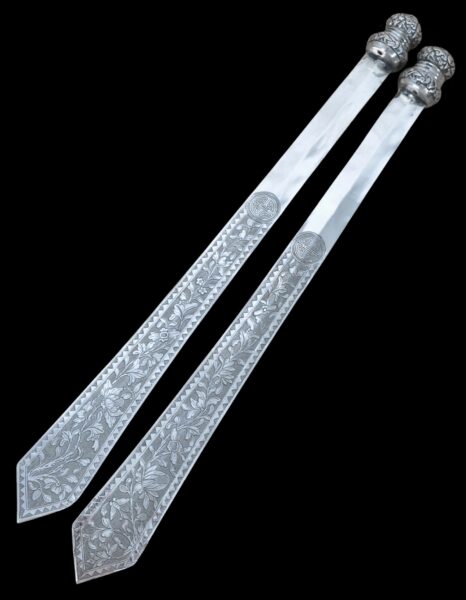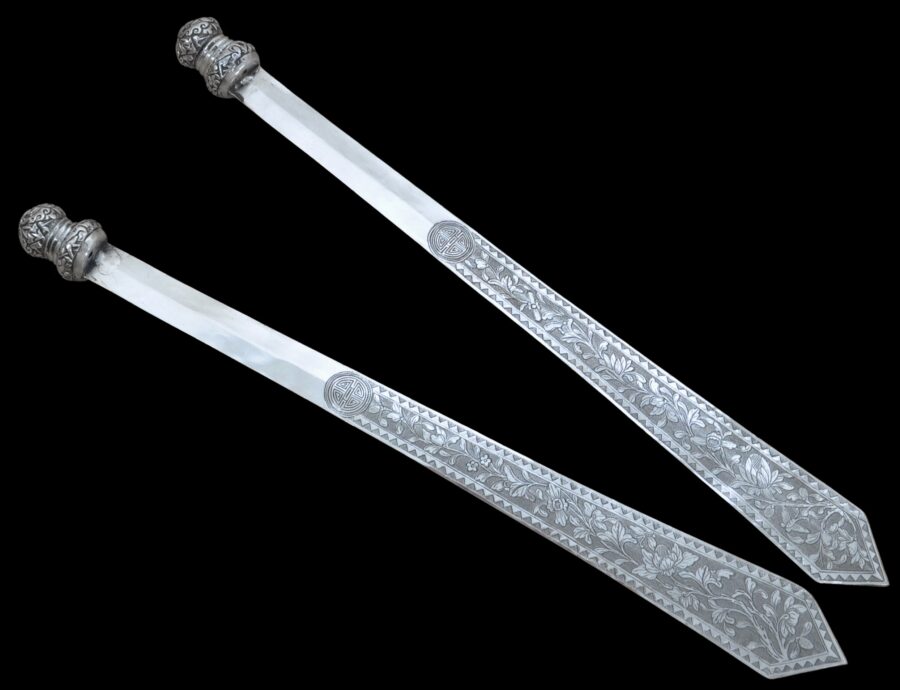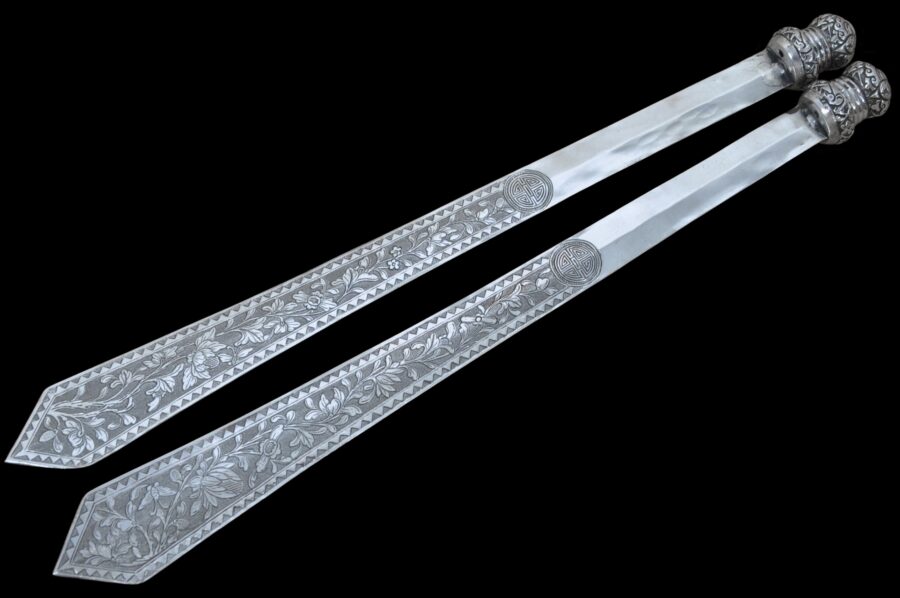This excellent and rare pair of elongated and tapering hairpins is of high-grade, solid silver, which is likely to be pure and so of a higher grade than sterling silver. Each has been made of two layers of silver that have been carefully and invisibly soldered together. Each is finished with a point and each side slopes away from a raised mid-point.
Both sides are very finely engraved first with a round longevity Shou symbol and then a long panel of chrysanthemums on one side and peonies on the other, all withing borders of repeated triangles and against a finely tooled background.
The finials are of stylised double-gourd form and chased in high relief with birds, butterflies, and leafy flourishes.
These motifs together with the Shou symbol suggest that this pair might have been a dowry or wedding gift.
Both are stamped with Chinese ideograms 源 珍 which transliterate as ‘Yuan Zhen’ meaning ‘source’ and ‘treasure’. This will be a brandname for the silversmith or retailer.
Such large hairpins were worn by aristocratic Manchu women in Beijing and other northern centres – their long hair would wrapped around pins such as these and kept in place, giving them the elaborate wing-tipped hairdo that became synonymous with wealthy Manchu women. The desire for such elaborate hairstyles fell out of fashion with the 1911 overthrew of the Manchu-led Qing dynasty which ended imperial rule in China. (Han Chinese women on the other hand favoured smaller and less elaborate hairstyles and so Han hairpins tended to be much smaller and less elaborate.)
The pair is in excellent condition.

Above: A Manchu Woman with a ‘wing’ hairstyle, probably Beijing, photographed by John Thomson, 1869.
References
van Cutsem, A., A World of Head Ornaments: Africa, Asia Oceania, America, Skira, 2005.
Duda, M., Four Centuries of Silver: Personal Adornment in the Qing Dynasty and After, Times Editions, 2002.













